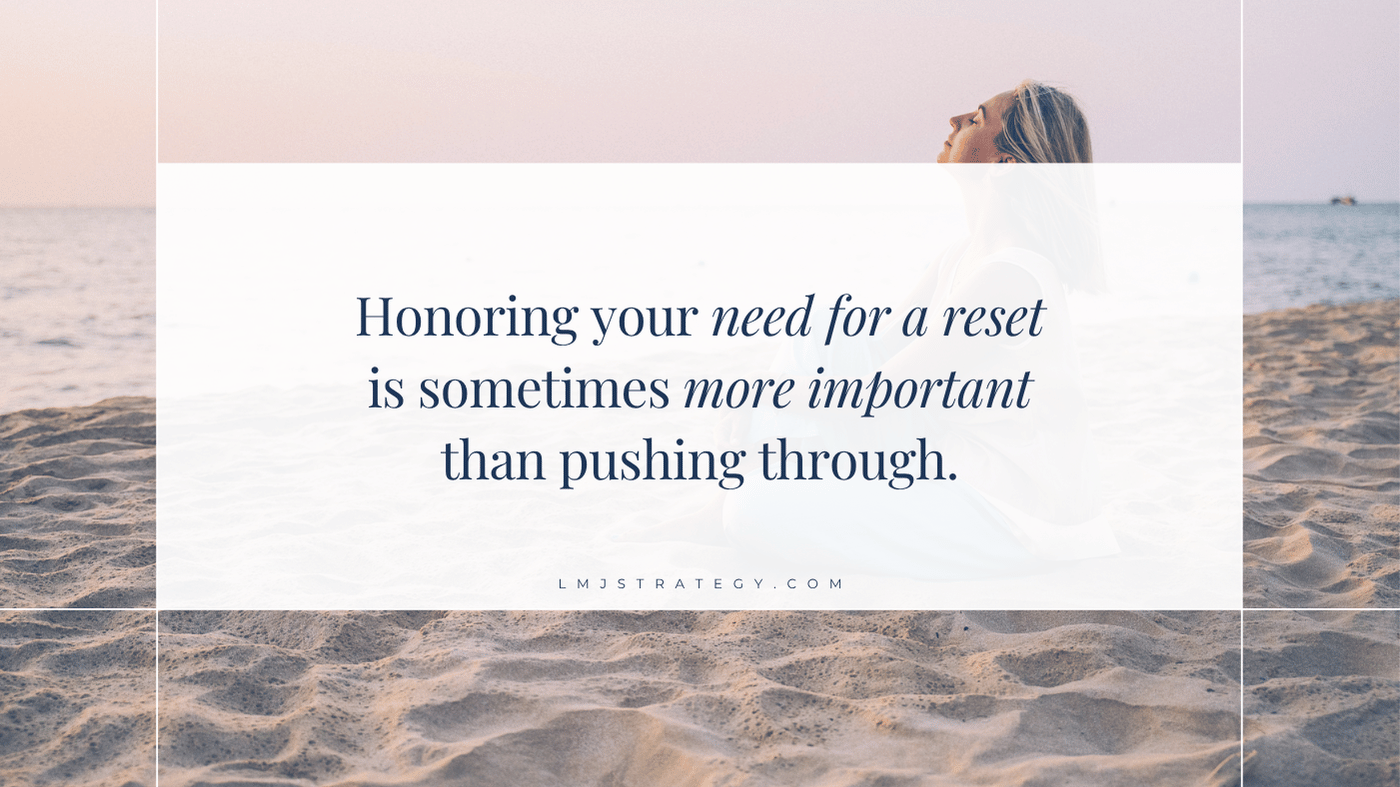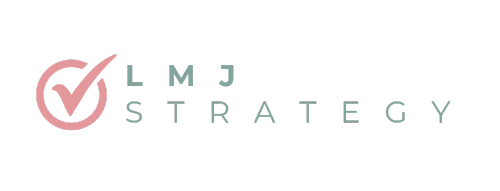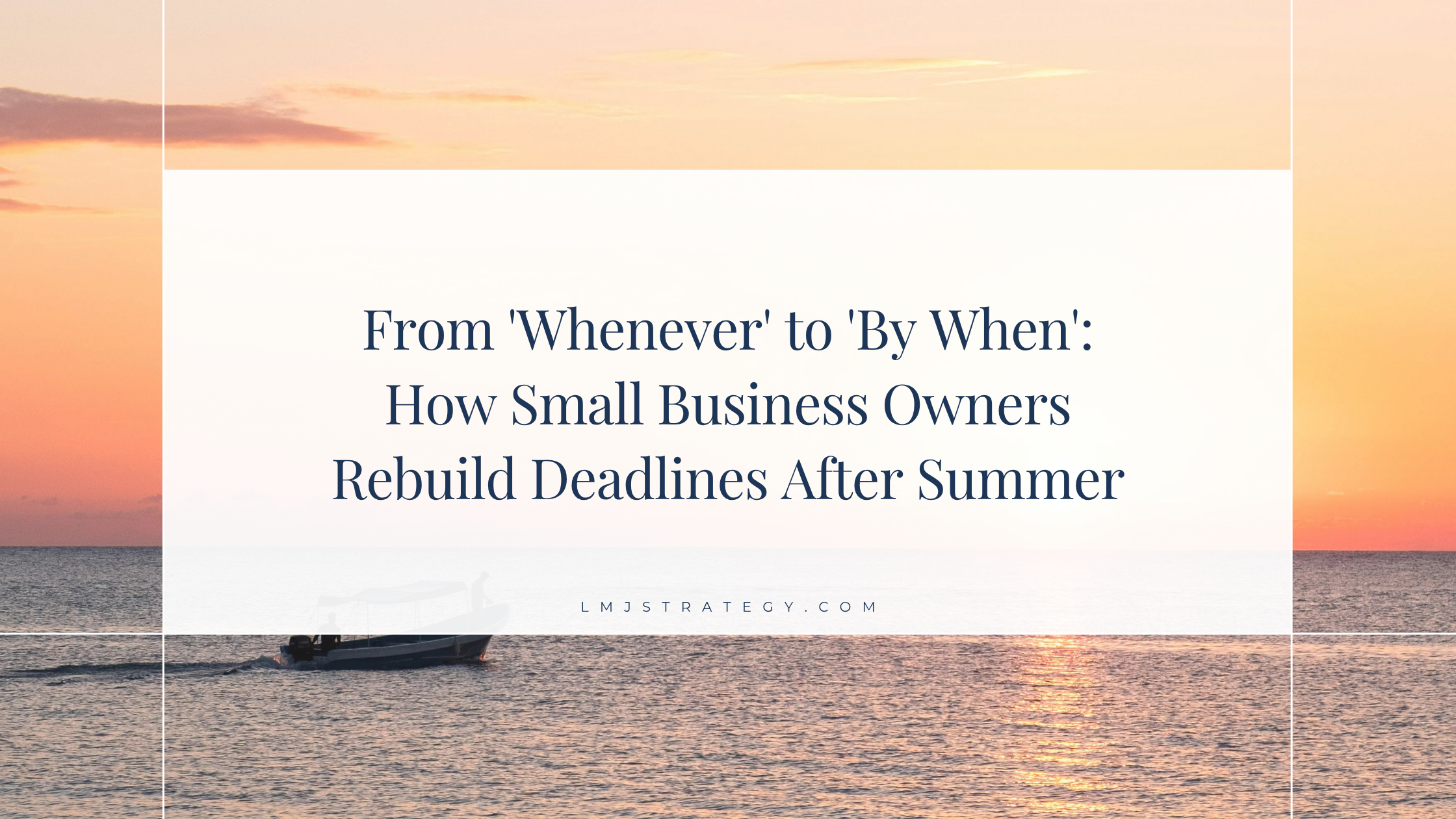Summer is winding down, and right now in my home things are filled with excitement. New teachers, new outfits, new school supplies, even a new school for my oldest. We’re all buzzing with anticipation. But in a week, I’ll be watching them get on the bus or dropping them off at school, and I’ll get back home alone, and walk back into the house. That’s the moment when things seem almost eerily quiet, and I find myself asking “well, now what?” If you’re a small business owner or solopreneur, you probably know this feeling.
The Summer ‘Whenever’ Shift for Small Business Owners
Summer naturally shifts us into a more flexible mindset. For me, my summer cadence is completely dictated by my family’s needs, which means my business operations have to adapt.
During the summer months, I limit in-person networking events and discovery calls. There are just too many potential interruptions and last minute conflicts. Client meetings stay on schedule because those commitments are firm, but everything else shifts from “I need to do this by Friday” to “I’ll get to that when I can.” I focus more on administrative tasks, run operational audits (like those in my assessment workbook), and look for ways to build and grow that aren’t quite as hands-on. I also block out two full weeks for family time, regardless of what else is happening, so that I can be mentally and physically present during their summer vacation.
Maybe your summer flexibility looks different. Perhaps you’re taking longer lunch breaks, working from the coffee shop more often, or just enjoying the extra daylight for evening walks instead of late work sessions. The common thread? We give ourselves permission to be less rigid about deadlines and timelines.
That Mini-New Year Feeling
When the first days of school start approaching, something shifts. That combination of anxiety, excitement, and unknown adventure that fills the air becomes contagious. It doesn’t hurt that every store is filled with beautifully coordinated shelves of fresh stationery (and yes, I’m absolutely a sucker for a new notebook!).
This time of year feels like a mini-New Year to me. There’s this surge of motivation and excitement about diving head-first back into productivity. I start looking at upcoming networking events again, checking my calendar for potential workshop dates, and reaching out to connections I’ve been meaning to schedule calls with.
Still, even with all that motivation, there’s a mental resistance.
Why Going Back to Structure is Harder Than It Seems
Some years, when the kids get on that bus and I walk back into the quiet house, my first thought isn’t about what to do next. It’s “I need a vacation!” That tension between excitement and exhaustion is tangible.
Even when you’re excited about getting back to business, there’s this tension between “I should be working” and “I actually need some me time.” After months of saying “I’ll get there when I can,” committing to firm deadlines again can feel restrictive. You start to miss that flexibility, that business-casual atmosphere you’ve been enjoying.
For many of us, transitions are just hard. Even the good ones. The mental shift from a less structured summer to a more routine fall can cause real struggle. Add in the silence of an empty house (or office), and it’s easy to find yourself in decision paralysis, questioning how to begin, where to begin, and even when to begin.
A Productivity System That Works With Your Energy
Here’s what I’ve learned: you don’t have to dive headfirst back into maximum productivity. Sometimes slow and steady beats the cannonball approach.
When these transition moments hit me, I have a framework that helps me work within my motivation levels instead of against them. In my task management system, I use three key filters to help me pick the best work to tackle:
- Priority Matrix: Where does this fall in terms of urgent vs. important?
- Time Estimate: How long will this actually take?
- Energy Level: How much mental bandwidth does this require? (I rank tasks 1-5, with 5 being high mental energy)
This way, on days when I’m feeling that mini-New Year motivation, I can tackle the high-energy, important projects. But on days when I’m still craving some of that summer flexibility, I can choose quick, low-energy tasks that still move things forward.
And if after all of that, you’re still feeling like you need some “me time”? Take it. Honoring your need for a reset is sometimes more important than pushing through. You’ll come back with a clearer mind and genuine motivation to move forward.

Making the Business Transition Smoother
The truth is, this summer-to-fall transition happens every year, and it affects your business whether you plan for it or not. The business owners who handle it best are the ones who recognize the pattern and build systems that can flex with their energy and availability.
If you’re finding yourself in that “well, now what?” moment, or if you’re struggling to get back into structured deadlines after months of flexibility, you’re not alone. This transition touches every small business owner differently, but the underlying challenge is the same: how do you rebuild momentum and accountability without losing the balance that made summer work?
If you’d like to talk about how to set up systems that make these seasonal transitions smoother, or how to rebuild your fall routine in a way that actually sticks, I’d love to connect. Let’s book a discovery call so we can meet and explore what support might look like for you and your business.

